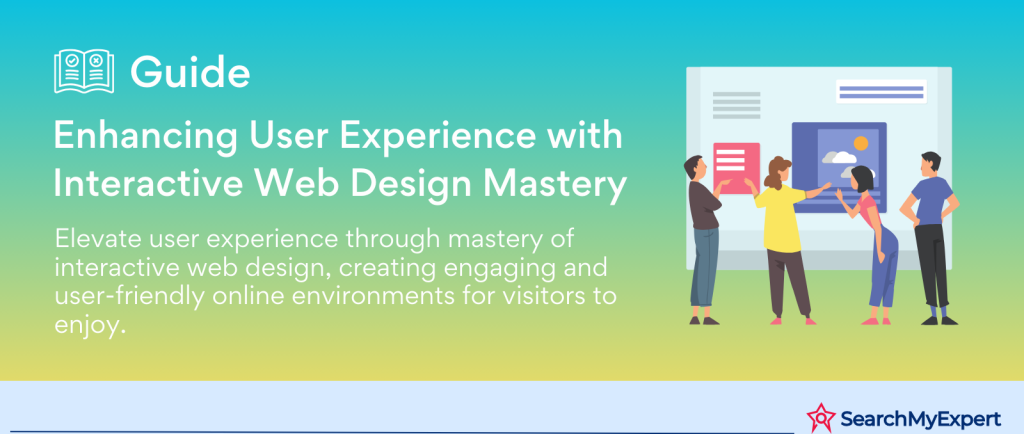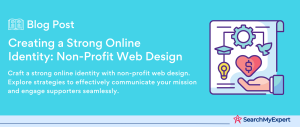Interactive Web Design Elements
Revolutionizing User Experience in the Digital Age
Interactive web design is a dynamic field that plays a crucial role in modern web development. It encompasses various elements that engage users and enhance their browsing experience. The essence of interactive design lies in its ability to turn passive viewers into active participants. This approach not only captivates the audience but also fosters a deeper connection between users and the digital platform. Let’s delve into the core components of interactive web design and understand why they are indispensable in today’s digital landscape.
- Dynamic Content:
Dynamic content is a powerful tool in interactive web design. Unlike static content, it changes based on user interactions or preferences. This includes features like personalized recommendations, live news feeds, and interactive infographics. Dynamic content keeps the website fresh, relevant, and engaging, encouraging users to return. - Animated Transitions:
Smooth and appealing animated transitions between pages or sections add a layer of sophistication to web design. These animations guide users through the site in an engaging way, making the journey from one page to another seamless and intuitive. - Micro-Interactions:
Micro-interactions are small, interactive elements that enhance user experience. They include button animations, scroll effects, and hover animations. These tiny details can significantly boost the usability and aesthetic appeal of a website. - Interactive Storytelling:
This technique involves narrating a story through interactive elements. Users become part of the story, often influencing its direction through their actions. Interactive storytelling is particularly effective in capturing the user’s imagination and keeping them engaged. - Gamification:
Incorporating game-like elements into web design, such as rewards, badges, and leaderboards, can significantly increase user engagement. Gamification adds a fun and competitive edge to the user experience, making mundane tasks enjoyable. - Feedback Mechanisms: Interactive feedback, such as form validation or interactive surveys, enhances user interaction. It provides immediate responses to user actions, making the experience more responsive and user-friendly.
- Augmented Reality (AR) and Virtual Reality (VR): These technologies create immersive experiences that go beyond traditional web browsing. They allow users to interact with 3D models, virtual environments, and augmented realities, offering a futuristic web experience.
- Voice User Interface (VUI):
VUIs enable users to interact with websites using voice commands. This technology is particularly beneficial for accessibility, allowing users with physical disabilities to navigate the web effortlessly. - Social Media Integration: Integrating social media elements, such as live feeds or share buttons, encourages user interaction and content sharing. It also helps in building a community around the website.
- Responsive Design:
A responsive website adapts to the screen size of the device it is being viewed on. This adaptability ensures a consistent and interactive experience across all devices, which is essential in today’s mobile-first world.
Benefits of Interactive Web Design Elements
Interactive web design elements are not just about aesthetic appeal; they play a vital role in enhancing various aspects of a user’s digital experience. From bolstering user engagement to boosting brand recall, the advantages of integrating interactive elements into web design are diverse and impactful. Let’s explore these benefits in detail to understand how they contribute to a successful online presence.
Increased User Engagement and Time Spent on Site
- Captivating User Attention:
Interactive elements like animations, hover effects, and dynamic content grab user attention more effectively than static pages. This heightened interest encourages users to explore more of the site. - Enhancing Usability:
Features such as intuitive navigation and interactive menus make it easier for users to find what they are looking for, thereby increasing the time they spend on the site. - Personalized Experience: Dynamic content that adjusts based on user preferences or past behavior creates a personalized experience, making users feel valued and encouraging them to engage more deeply with the site.
Enhanced Conversion Rates and Customer Satisfaction
- Simplifying the Journey: Interactive elements like step-by-step guides or interactive forms simplify complex processes, making it more likely for users to complete actions such as purchases or sign-ups.
- Immediate Feedback:
Interactive feedback mechanisms, like real-time form validation, provide users with immediate guidance, reducing frustration and abandonment rates. - Building Trust:
A well-designed, interactive website reflects positively on the brand, fostering trust and confidence in the company, which can lead to higher conversion rates.
Improved Brand Awareness and Recall
- Memorable Experiences: Unique interactive features make a website stand out, creating memorable experiences that users are likely to recall and share.
- Consistent Branding: Interactive elements that align with the brand’s identity help reinforce brand messaging and aesthetics, making it easier for users to recognize and remember the brand.
- Storytelling: Interactive storytelling can convey brand values and narratives in an engaging way, further solidifying brand identity in the minds of users.
Stronger Emotional Connection with the Audience
- Engaging the Senses: Elements like video, audio, and motion graphics engage multiple senses, creating a more immersive experience that can elicit emotional responses.
- Interactive Storytelling: Allowing users to participate in a narrative can create a deeper emotional bond between the user and the brand.
- Personalization:
Tailoring content to individual users can make them feel understood and valued, strengthening their emotional connection to the brand.
More Dynamic and Engaging User Experience
- Keeping Content Fresh: Dynamic content ensures that the website always has something new to offer, keeping the user experience fresh and engaging.
- Adaptive Interactions:
Responsive design and adaptive interactive elements ensure that users have a seamless experience across all devices. - Gamification: Incorporating game-like elements can transform mundane interactions into fun and engaging activities, enhancing the overall user experience.
Exploring the Spectrum of Interactive Web Design Elements
Interactive web design elements are the cornerstone of modern, user-centric websites. These elements not only enhance the aesthetic appeal of a site but also significantly improve user engagement and understanding. Each type of interactive element serves a unique purpose, contributing to a rich, dynamic user experience. Let’s dive into the various types of interactive web design elements and understand their individual roles and benefits.
Animations and Microinteractions
- Scroll-Triggered Effects:
These animations activate as the user scrolls through a page, adding a dynamic layer to the browsing experience. They guide the user’s journey, highlight important content, and keep the user engaged with visual stimuli. - Hover States: When a user hovers over elements like buttons or links, hover states provide immediate visual feedback. This not only enhances usability but also adds a layer of interactivity that keeps users engaged.
- Loading Animations:
Loading animations can transform the waiting time into an engaging experience, reducing perceived loading times and keeping users entertained.
Quizzes and Polls
- Gather User Data:
Quizzes and polls are effective tools for collecting user preferences and feedback. This data can be invaluable for tailoring the user experience and improving products or services. - Increase Engagement: Interactive quizzes and polls keep users engaged, encouraging them to spend more time on the site. They also provide a fun way for users to interact with content.
Interactive Games and Simulations
- Enhance Learning: Games and simulations can be used to educate users about a product, service, or concept in an interactive and enjoyable way.
- Brand Experience:
By integrating brand elements into games or simulations, companies can create memorable experiences that enhance brand recognition and loyalty.
Virtual Product Tours and 3D Models
- Improve Product Understanding: 3D models and virtual tours allow users to explore products in detail, leading to a better understanding and a more informed purchase decision.
- Enhanced Visualization: These tools provide a realistic representation of products, helping users visualize them in real-life scenarios.
Personalized Recommendations and Content
- Tailor the User Experience:
By offering personalized recommendations, websites can cater to the individual interests and needs of each user, making the browsing experience more relevant and enjoyable. - Increased Relevance:
Personalized content ensures that users see what is most relevant to them, increasing the likelihood of engagement and conversion.
User-Generated Content
- Encourage Community Engagement: Integrating user-generated content, such as reviews or photo submissions, fosters a sense of community and trust among users.
- Authenticity and Trust:
User-generated content adds a layer of authenticity to the site, as users often trust content created by their peers more than branded messages.
Interactive Infographics and Data Visualizations
- Simplify Complex Information:
Interactive infographics and data visualizations turn complex data sets into understandable and engaging visual formats. - Enhanced User Understanding: By allowing users to interact with data, these tools can provide a deeper understanding of the information being presented.
Design Considerations for Interactive Web Design Elements
When integrating interactive elements into web design, it’s crucial to balance creativity with usability and functionality. Effective interactive design is not just about adding dynamic elements; it’s about creating an intuitive and inclusive user experience. Here, we delve into the key design considerations that ensure interactive elements not only captivate but also cater to a diverse range of users efficiently and effectively.
User-Centered Design: Prioritizing User Needs and Expectations
- Understanding the Audience:
A deep understanding of the target audience is essential. This includes their preferences, challenges, and how they typically interact with websites. - Designing for Usability:
User-centered design focuses on creating interfaces that are easy to navigate and understand. This means organizing content logically, using familiar icons, and ensuring that interactive elements are used to enhance, not complicate the user experience. - Testing and Feedback:
Regular user testing and feedback collection are crucial. They help in refining the design to ensure it meets user needs and expectations effectively.
Clear and Intuitive Interactions: Simplifying User Interactions
- Predictable Navigation: Interactive elements should lead users through the website in a predictable manner. Avoid overly complex or unconventional design choices that could confuse users.
- Affordance and Signifiers: Design elements should clearly indicate their functionality. For example, buttons should look clickable, and sliders should suggest draggability.
- Consistency:
Keeping interactions consistent throughout the website helps users learn and predict how to interact with various elements, enhancing their overall experience.
Accessibility: Ensuring Inclusivity in Interactive Design
- Design for All Users: Interactive elements must be accessible to users with disabilities. This includes providing keyboard navigation, screen reader compatibility, and alternative text for images and animations.
- Color and Contrast: Ensure that there is sufficient contrast between text and background colors. Be mindful of colorblind users and use textures or shapes to distinguish elements when necessary.
- Accessible Forms and Controls: Forms should be clearly labeled, and error messages should be descriptive to help users understand how to complete actions successfully.
Mobile-Friendliness: Adapting Interactions for Various Devices
- Responsive Design: Interactive elements must work seamlessly across different devices and screen sizes. This might involve redesigning elements specifically for mobile or tablet use.
- Touchscreen Compatibility:
Elements should be easy to tap with a finger, and gestures like swiping or pinching should be intuitively integrated. - Load Times and Data Usage: Optimizing images and animations for mobile ensures faster load times and considers users with limited data plans.
Performance: Balancing Interactivity with Speed and Responsiveness
- Optimizing Load Times:
Interactive elements, especially those involving multimedia content, can slow down a website. It’s essential to optimize these elements for quick loading without compromising quality. - Smooth Animations and Transitions: Animations should be smooth and not cause lag or jitters in the user experience. This requires careful programming and testing across different browsers and devices.
- Balance Between Aesthetics and Functionality:
While interactive elements can greatly enhance the visual appeal of a website, they should not detract from the website’s performance or usability.
Implementing Interactive Web Design Elements: Strategies for Excellence
Implementing interactive elements in web design is a balancing act that requires careful planning and execution. To ensure these elements effectively enhance the user experience and meet business objectives, certain best practices must be followed. Let’s explore the key strategies for successfully incorporating interactive elements into web designs.
Setting Clear Goals and Objectives for Interactive Elements
- Aligning with Business Goals: Define what you want to achieve with the interactive elements. Whether it’s increasing user engagement, driving sales, or educating users, each interactive feature should have a clear purpose aligned with your overall business objectives.
- User-Centric Goals:
Consider what users should gain from interacting with these elements. Goals might include a better understanding of a product, an enjoyable browsing experience, or easier navigation. - Measurable Objectives:
Set specific, measurable objectives for each interactive element. This could be an increase in time spent on the site, a higher click-through rate, or improved user satisfaction scores.
Testing Different Interactions and Iterating Based on User Feedback
- User Testing:
Conduct user testing sessions to observe how real users interact with the design elements. This provides invaluable insights into user behavior and preferences. - Collecting Feedback:
Implement mechanisms to collect user feedback directly on the website. This could be through surveys, feedback forms, or usability tests. - Iterative Design Process:
Use the insights gained from testing and feedback to iterate and refine the interactive elements. This process should be ongoing to continuously improve the user experience.
Integrating Interactive Elements Seamlessly with the Overall Design
- Consistency in Design: Ensure that interactive elements are consistent with the overall design theme of the website. This includes using consistent color schemes, typography, and design motifs.
- Contextual Integration:
Interactive elements should feel like a natural part of the website’s narrative. They should be integrated in a way that complements the content and purpose of the page. - Avoiding Overuse: While interactive elements can be powerful, overusing them can lead to a cluttered and confusing user experience. Balance is key.
Using High-Quality Visuals and Animations
- Professional Quality:
Use high-quality, professional-grade visuals and animations. Poor quality can detract from the user experience and harm your brand’s perception. - Optimization: Ensure that visuals and animations are optimized for fast loading without sacrificing quality. This is particularly important for users on mobile devices or slower internet connections.
- Relevance:
Visuals and animations should be relevant to the content and purpose of the website. They should enhance the message, not distract from it.
Providing Clear and Concise Instructions for Users
- Guidance for Interactivity:
If an interactive element is complex or unfamiliar, provide clear instructions on how to use it. This can be in the form of tooltips, instructional text, or onboarding walkthroughs. - Accessibility Instructions: Ensure that instructions are accessible to all users, including those with disabilities. This means providing text alternatives for voice instructions and vice versa.
- Keeping it Simple: Instructions should be concise and easy to understand. Avoid technical jargon or overly complicated explanations that could confuse users.
Inspiration and Case Studies
In the realm of interactive web design, a variety of websites stand out in 2023 for their successful integration of interactive elements:
Fixate:
- This website is notable for its fully illustrated design, impressive typography, and minimalist approach, making each page visually striking and engaging.
Meomi:
- Known for its fun and engaging design, Meomi features professionally drawn characters that move and react as users scroll, creating a lively and interactive experience.
Polish Christmas Tradition Site:
- This interactive site allows users to engage with the Polish Christmas tradition by controlling Santa and gathering gifts, symbolizing the legendary tradition.
Bike Models Website:
- This site presents a vast array of bike models through brilliant illustrations and parallax scrolling, offering a colorful and interactive experience for bike enthusiasts.
CollegeHumor:
- A well-known comedy website, CollegeHumor engages users with unique drawings, sketches, mini-series, and animations, adding a fun dimension to its interactive elements.
Flat and Simple Design Website:
- This website uses animated illustrations effectively to attract attention and facilitate easy navigation.
Modern Slavery Awareness Site:
- This site uses cartoon illustrations to provide an interactive experience that educates users about modern slavery through a unique and engaging approach.
Marra Language Learning Site:
- Offering an interactive way to learn the Marra language, this site combines animation and smart interaction, enhancing the learning experience.
Designer’s Portfolio:
- Unlike typical portfolios, this website is designed as a cozy room with stylish furniture, where website sections are integrated as elements of interior design.
The Oatmeal:
- Known for its diverse and captivating content, The Oatmeal engages users with comics, quizzes, and stories in a beautiful cartoon-like design.
Embracing the Future of Web Design: The Power of Interactivity
As we conclude our exploration of interactive web design, it’s clear that this dynamic approach offers a multitude of benefits and requires thoughtful consideration to implement effectively. Let’s summarize the key insights gathered from our journey into the realm of interactive web design and offer guidance for further exploration and learning in this exciting field.
Summarizing Key Benefits of Interactive Web Design Elements
- Enhanced User Engagement:
Interactive elements captivate users, encouraging them to spend more time exploring the content and engaging with the website. - Improved User Experience:
Through personalized experiences and dynamic content, interactive web design tailors the user journey, making it more enjoyable and relevant. - Increased Conversion Rates:
By simplifying complex processes and making websites more intuitive, interactive elements can lead to higher user satisfaction and increased conversion rates. - Stronger Brand Connection: Interactive storytelling and immersive experiences help in building a stronger emotional connection with users, enhancing brand loyalty and recall.
- Accessible and Inclusive Design:
Thoughtfully designed interactive elements can make websites more accessible and inclusive, catering to a wider audience.
Encouraging Exploration and Experimentation
- Innovation and Creativity: Encourage web designers and businesses to experiment with various interactive elements. Innovation lies at the heart of interactive design, and pushing the boundaries can lead to unique and memorable user experiences.
- User-Centric Approach:
Emphasize the importance of a user-centric approach. Designers should continually seek user feedback and iterate their designs to ensure they meet user needs effectively. - Balance and Integration:
Remind readers of the importance of balancing interactivity with usability. Interactive elements should enhance, not hinder, the user experience and should be seamlessly integrated into the overall design.
Resources for Further Learning and Inspiration
- Online Courses and Workshops:
Recommend online platforms like Coursera, Udemy, or LinkedIn Learning, where professionals can find courses on web design, UX/UI design, and interactive media. - Web Design Blogs and Forums:
Suggest following reputable web design blogs such as Smashing Magazine, A List Apart, and Web Designer Depot for the latest trends, case studies, and tutorials. - Design Inspiration Websites: Encourage readers to explore websites like Behance, Dribble, and Awwwards for creative inspiration and to see examples of cutting-edge interactive web design.
Conclusion:
In the realm of digital innovation, interactive web design stands out as a game-changer. By integrating engaging elements, websites can significantly enhance user experience, foster emotional connections, and drive business success. This comprehensive exploration provides insights into the myriad benefits, strategic implementations, and best practices for incorporating interactive elements in web design.
With a world of resources at your fingertips and a landscape ripe for experimentation, the time is now to harness the full potential of interactivity and reshape the digital experience. Whether you’re a seasoned designer or a business seeking to revamp your online presence, embracing the power of interactive web design is a step towards a more engaging, memorable, and successful digital future.
Craft an unforgettable website with our Web Design Company.
Table of Contents
Toggle






